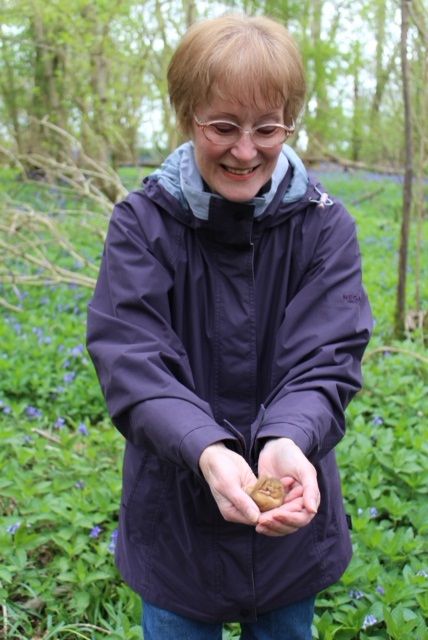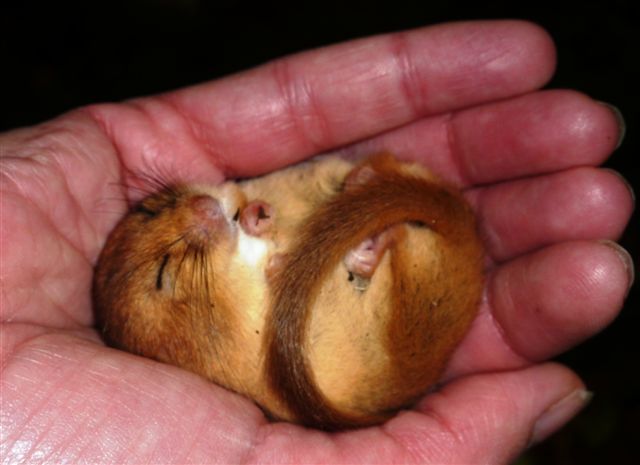Meet Celia Carter: dormouse monitor
In this series, we chat to the dedicated staff members, conservation partners and volunteers at PTES. We find out why each of them chose a career in wildlife conservation, what they find rewarding about their work and what they love most about what they do.
Celia Carter
Dormouse monitor in Surrey
Tell us about yourself and the site you monitor
From the age of six my passion was wildlife, fired in the 1960s and 70s by the sudden increase in books and T.V. programmes on conservation. As a member of the London Zoo’s XYZ club, I attended conferences, and a highlight was a trip with them to Kenya in 1969.
I studied zoology and environmental science at university in the 1970s. With few jobs in conservation available my career became teaching and business. This was frustrating but I took advantage of the rapid development of volunteering in the 1980s, taking many relevant courses and obtaining my dormouse licence in 2013.
The two sites I monitored were at Marden Park in Woldingham in Surrey. This is mixed deciduous woodland on the top of the scarp of the North Downs, owned by the local community and managed by the Woodland Trust. There are now 67 boxes at the northern Great Church Wood site and 50 at the south of Marden Park Woods, as well as 15 in two local gardens.
How long have you been monitoring for?
I helped put dormouse boxes into these sites in 2000 and 2001. I started to monitor there, with license holders in 2005, so have been monitoring for over 18 years. In 2008, the first dormouse nest was found and in 2011 the first dormouse. Two volunteers received some of their licence training on these sites.
What’s the most memorable day you’ve had looking for dormice?
The most memorable day was the first dormouse being found, after so many years of looking!
Describe your woodland and why it’s special to you
Marden Park is mixed ash, oak, hazel woodland with honeysuckle, old man’s beard, bramble, fern, bluebells, and other ‘ancient’ woodland herbs. It is special to me because of the many joyful hours I have spent there, finding dormice and seeing other species such as deer, fox and signs of badger.
What at the challenges at the site?
When the dormouse nest boxes were put in, the hazel was in good condition. Over the last 20 years, the coppice has aged and in the last eight, much of it has fallen.
This caused some loss of nest boxes, and the number of dormice found has gradually decreased, now only found in the ‘core’ area, where recorded in 2008. Ash die-back has caused further tree loss. The Covid19 pandemic delayed the siting of new boxes to the south site and reduced the chances of mitigation works at Great Church Wood but these took place early in 2024.
It has also been difficult to find volunteers who live near enough to the site to attend consistently. However, I am pleased to say that Sophie took over these sites in March 2024. I will continue to monitor the 15 boxes in the private gardens and help Sophie if required.
Tell us something about you we wouldn’t expect from a dormouse monitor
Sometimes finding time to be a dormouse monitor was difficult as I was working hard to support my children and had variable health. However, monitoring really helped me, giving me the chance to do something useful for conservation, and a lot of pleasure too!
Header image credit Kozma 94, shutterstock.com


